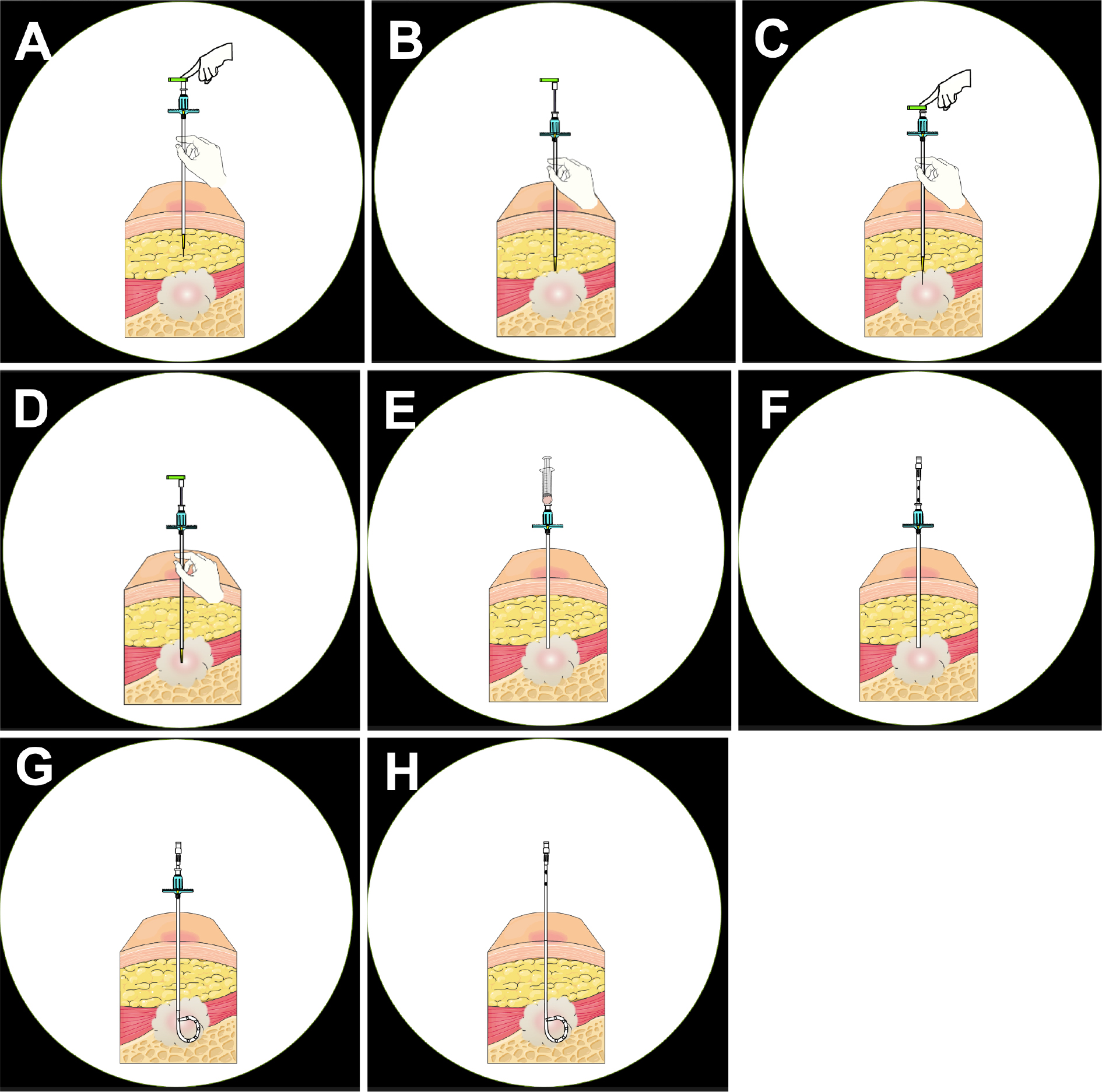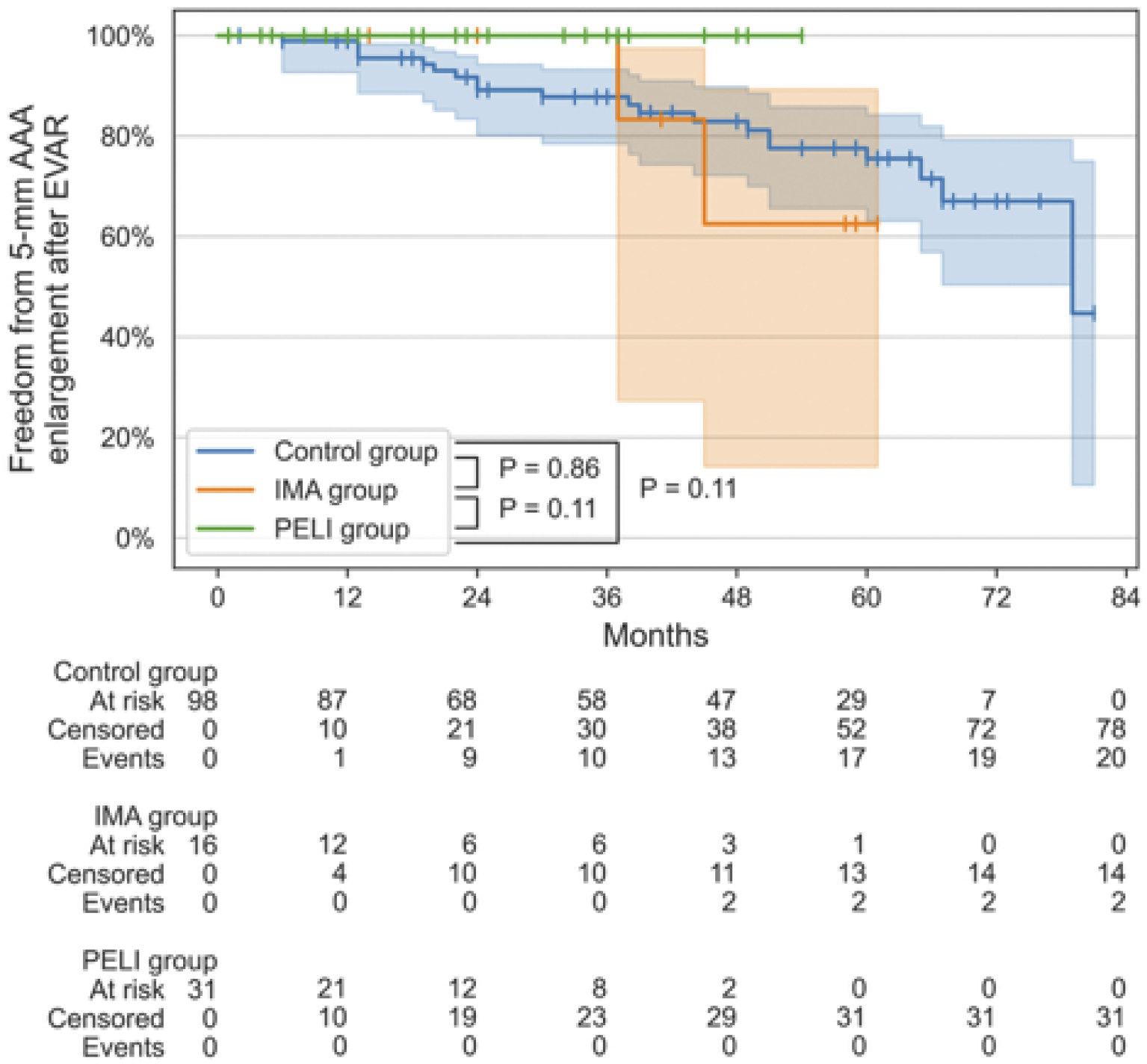2 0 0 0 OA Computed Tomography-guided Drainage with Modified Trocar Technique Using a Drainaway Drainage Kit
- 著者
- Koji Togawa Seishi Nakatsuka Jitsuro Tsukada Nobutake Ito Yosuke Yamamoto Togo Kogo Hiroki Yoshikawa Manabu Misu Masashi Tamura Shigeyoshi Soga Masanori Inoue Hideki Yashiro Tadayoshi Kurata Masahiro Okada Masahiro Jinzaki
- 出版者
- Japanese Society of Interventional Radiology
- 雑誌
- Interventional Radiology (ISSN:24320935)
- 巻号頁・発行日
- vol.8, no.3, pp.130-135, 2023-11-01 (Released:2023-11-01)
- 参考文献数
- 10
Purpose: Image-guided percutaneous drainage for abscesses is known as a safe and effective treatment. The computed tomography-guided percutaneous drainage kit Drainaway (SB Kawasumi Co., Ltd.), developed on the basis of a modified trocar method, has made it possible to complete the procedure only under computed tomography guidance without radiographic fluoroscopy. This study investigated the feasibility and safety of Drainaway for abscess drainage.Material and Methods: In this retrospective observational study, 28 procedures in 27 patients (18 men and 9 women; age 67.0 ± 12.3 years) who underwent computed tomography-guided drainage using Drainaway between March and December 2021 at seven affiliated hospitals were analyzed. Patients with symptomatic, puncturable on computed tomography and refractory abscesses were included. Technical success (successful drainage with computed tomography alone), primary clinical success (successful drainage with Drainaway alone), secondary clinical success (avoidance of surgery), and complications were evaluated.Results: The sites of the abscesses were the intraperitoneal, retroperitoneal, and thoracic cavities in 19, 5, and 2 patients, respectively, and subcutaneous tissue in 1 patient. The mean size of the abscesses was 7.1 ± 3.4 cm. The technical success rate was 96.4%; the ligament of the puncture route could not be penetrated in one case. The primary clinical success rate was 77.8%, whereas the secondary clinical success rate of catheter upsizing or replacement was 96.3%. Complications included one case of biliary pleurisy that required drainage.Conclusions: Drainaway is a useful device that allows abscess drainage using only computed tomography guidance without radiographic fluoroscopy.
- 著者
- Hirotsugu Nakai Shinichi Iwakoshi Shinya Takimoto Takanori Taniguchi
- 出版者
- Japanese Society of Interventional Radiology
- 雑誌
- Interventional Radiology (ISSN:24320935)
- 巻号頁・発行日
- vol.8, no.3, pp.146-153, 2023-11-01 (Released:2023-11-01)
- 参考文献数
- 20
Purpose: This study aims to evaluate the efficacy of preemptive embolization (PE) of the lumbar arteries (LAs) and inferior mesenteric artery (IMA) (PELI) for preventing abdominal aortic aneurysm (AAA) enlargement associated with type 2 endoleak (T2EL).Material and Methods: Patients who underwent endovascular aneurysm repair (EVAR) between January 2015 and December 2020 were classified into the control (without PE), IMA (PE of a patent IMA with a diameter ≥2.5 mm), and PELI (PE of patent LAs with a diameter ≥2 mm and IMA) groups. The rate of freedom from AAA enlargement following EVAR (enlargement ≥5 mm from pre-EVAR) was compared using the log-rank test. The prevalence of T2EL at 6 months and 1 year after EVAR was compared using Fisher's exact test.Results: The cumulative rates of freedom from AAA enlargement at 54 months after EVAR (maximum observational period in the PELI group) were as follows: control group, 77.5%; IMA group, 62.5%; and PELI group, 100%. The mean CT follow-up periods of the control, IMA, and PELI groups were 46.4 ± 22.3, 31.1 ± 20.6, and 22.9 ± 15.5 months, respectively. None of the 31 patients in the PELI group experienced AAA enlargement after EVAR, whereas 2 out of the 16 patients in the IMA group and 20 out of the 98 patients in the control group had AAA enlargement. No significant differences were observed in the rate of freedom from AAA enlargement (PELI group vs. IMA group, P = 0.11; PELI group vs. control group, P = 0.11). The prevalence of T2EL was significantly lower in the PELI group than in the control group at 6 months (13.6% in PELI group vs. 42.1% in control group, P = 0.02) and 1 year (14.3% in PELI group vs. 40.0% in control group, P = 0.04).Conclusions: PELI was significantly associated with a low prevalence of T2EL and may prevent T2EL-associated AAA enlargement.
- 著者
- Shiro Miyayama Masashi Yamashiro Keiichi Nagai Akira Yokka
- 出版者
- Japanese Society of Interventional Radiology
- 雑誌
- Interventional Radiology (ISSN:24320935)
- 巻号頁・発行日
- vol.1, no.2, pp.67-74, 2016 (Released:2017-03-08)
- 参考文献数
- 9
- 被引用文献数
- 5
Selective catheterization of some branch arteries may occasionally be impossible, especially small branches arising from a large parent artery or the aorta with an acute angle at the orifice. A catheter with a large side hole or cleft is a useful device for selecting such branch arteries. This catheter can be made easily during the procedure from a conventional angiographic catheter as individual anatomy requires, and a microcatheter-guidewire system can be advanced into the desired branch artery through the side hole or cleft.
- 著者
- Noriaki Wada Akio Furuya Toshihiro Ike Naofumi Kasai Shohei Takata Yoshiaki Tao Yoshiki Asayama
- 出版者
- Japanese Society of Interventional Radiology
- 雑誌
- Interventional Radiology (ISSN:24320935)
- 巻号頁・発行日
- pp.2019-0002, (Released:2019-08-23)
- 参考文献数
- 24
Objective: The clinical features and outcomes of bronchial arterial embolization (BAE) for hemoptysis were investigated, and we aimed to identify the factors associated with recurrent hemoptysis after BAE.Patients and Methods: Thirty-three consecutive patients treated with BAE for hemoptysis between July 2011 and June 2018 in a single medical center were retrospectively analyzed. Sex, age, body mass index, smoking history, comorbidity, laboratory data, etiology, angiographic findings, number and variety of embolized vessels, adverse events, and outcomes were evaluated.Results: The median age at the time of first BAE was 71 years (interquartile range [IQR], 59.5-86.5 years). The most common etiologies were cryptogenic hemoptysis (n=6), non-tuberculosis mycobacteriosis (n=6), pulmonary aspergillosis (n=5), bronchiectasis (n=5), and others (n=11). The common angiographic findings were neo-vascularization (n=31) and hypertrophied vessels (n=19). Eight patients (24%) experienced recurrence after BAE during the median follow-up time of 15 months (IQR, 4-25.5 months), and recurrence occurred in two patients (6%) within 1 month and in one patient (3%) after 3 years. The recurrence-free time after BAE was significantly shorter in patients with ≥20 pack-years smoking history (p=0.0218) and patients using anticoagulants or antiplatelet agents (p=0.0032). No moderate to severe adverse events related to BAE were encountered.Conclusion: BAE is a safe and effective treatment to control hemoptysis. However, recurrence occurred in 24% of our patient series. A smoking history of ≥20 pack-years and the use of anticoagulants or antiplatelet agents may be associated with a higher rate of recurrent hemoptysis following BAE.

